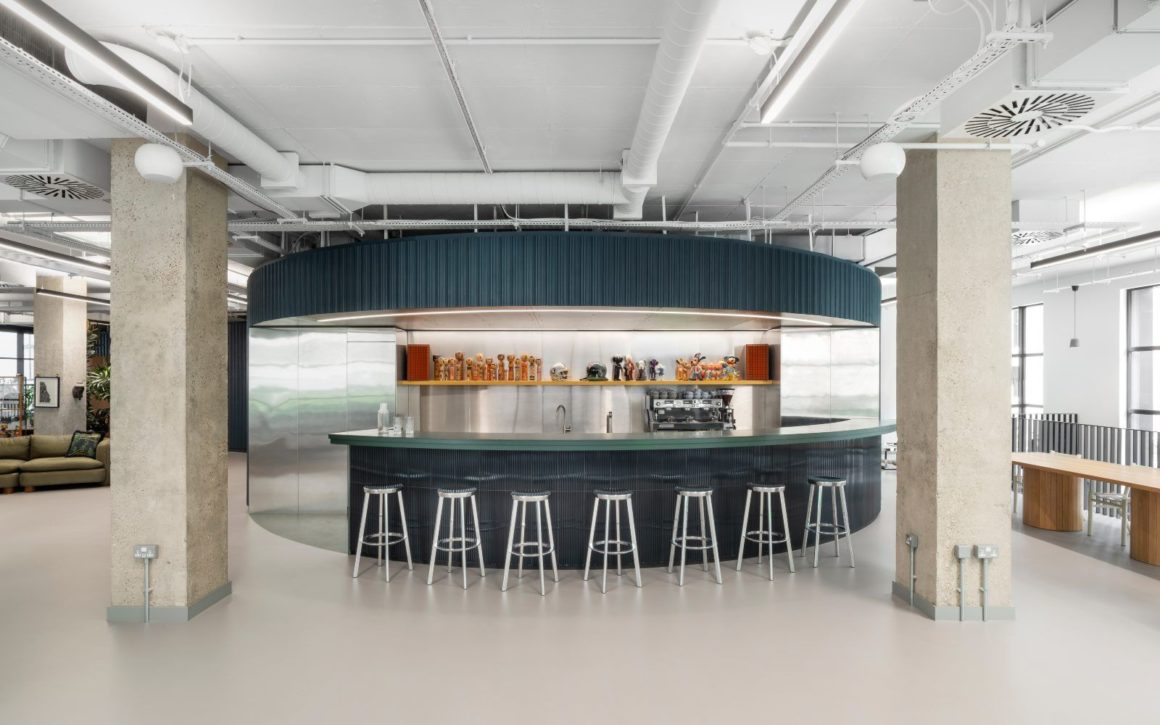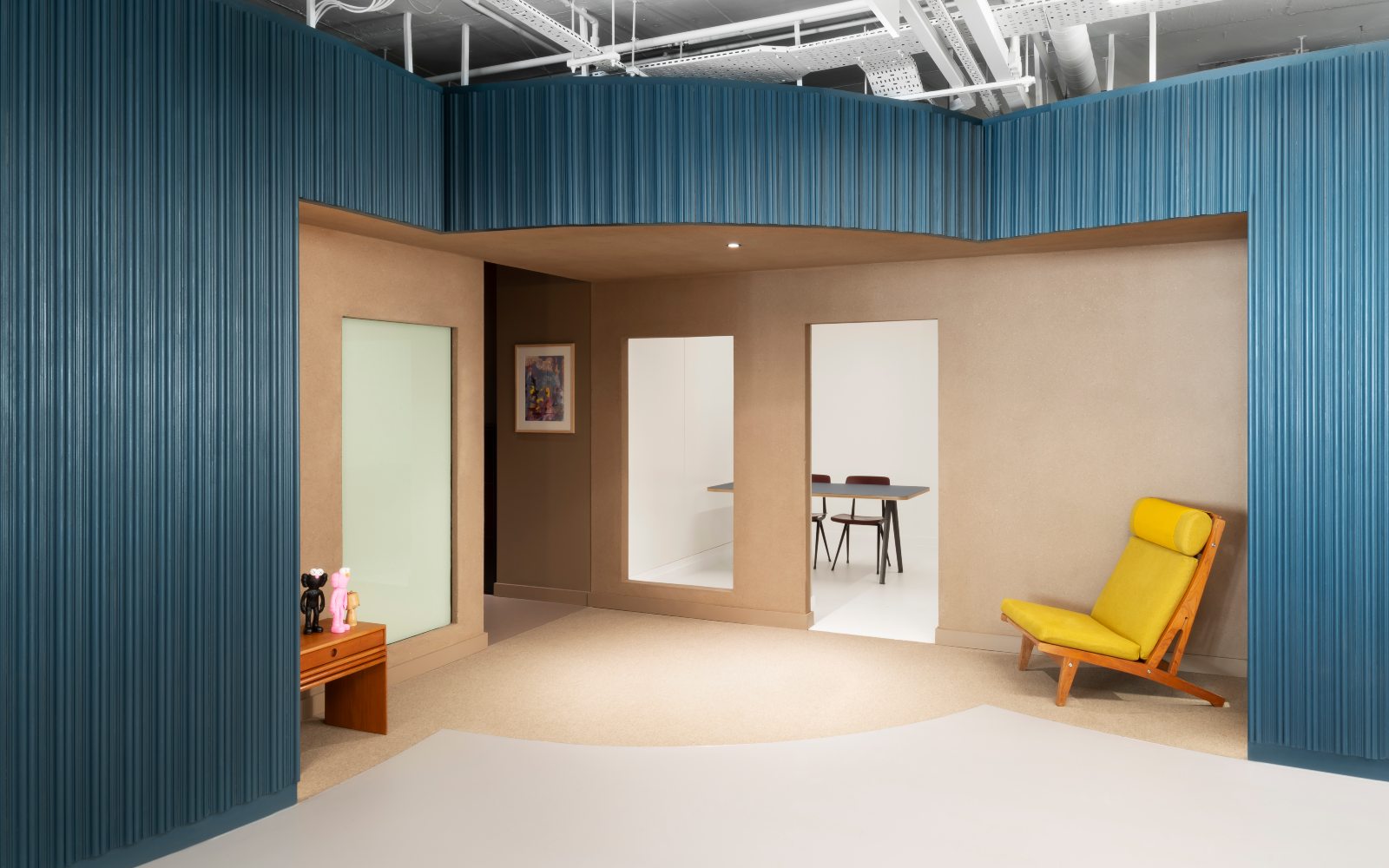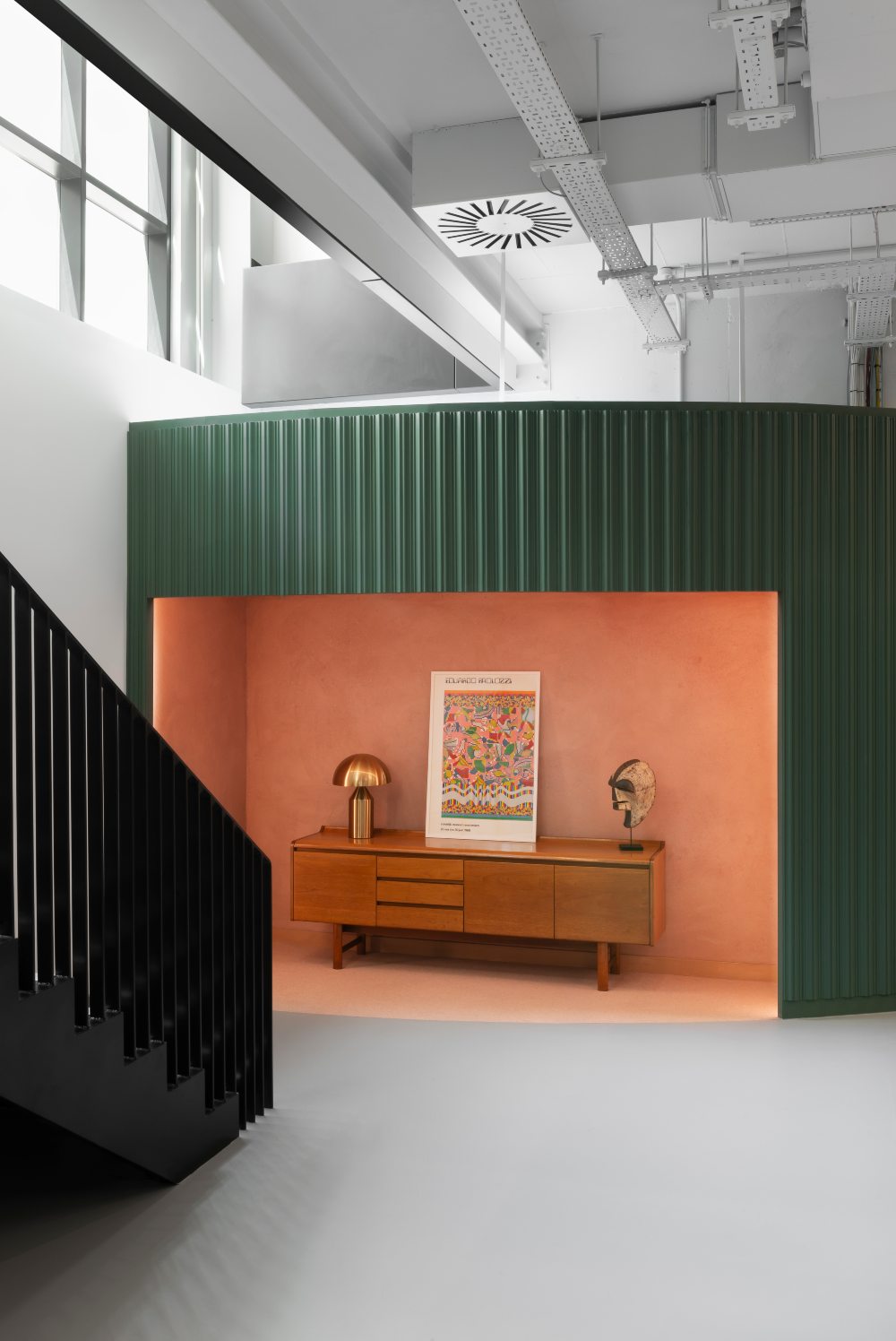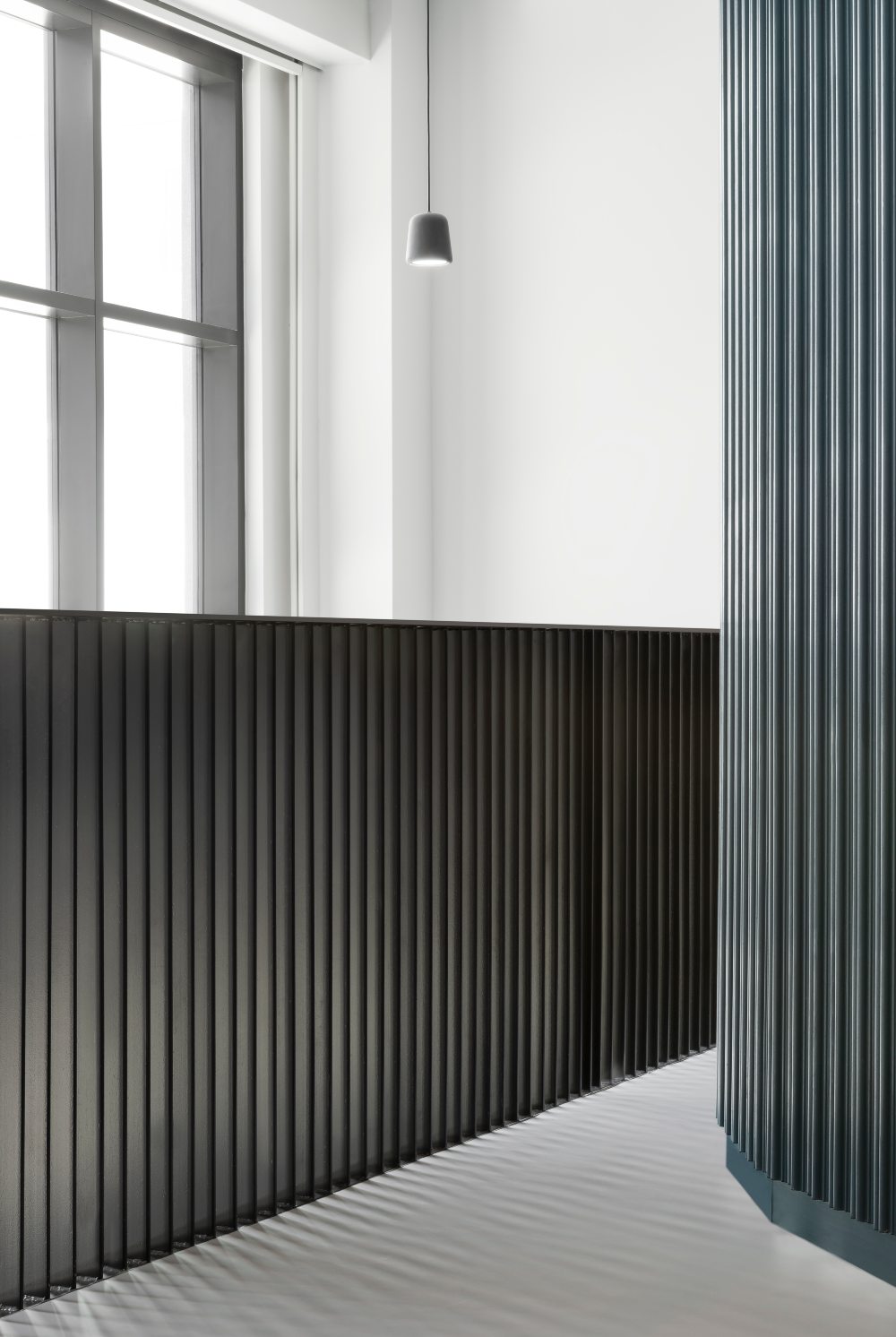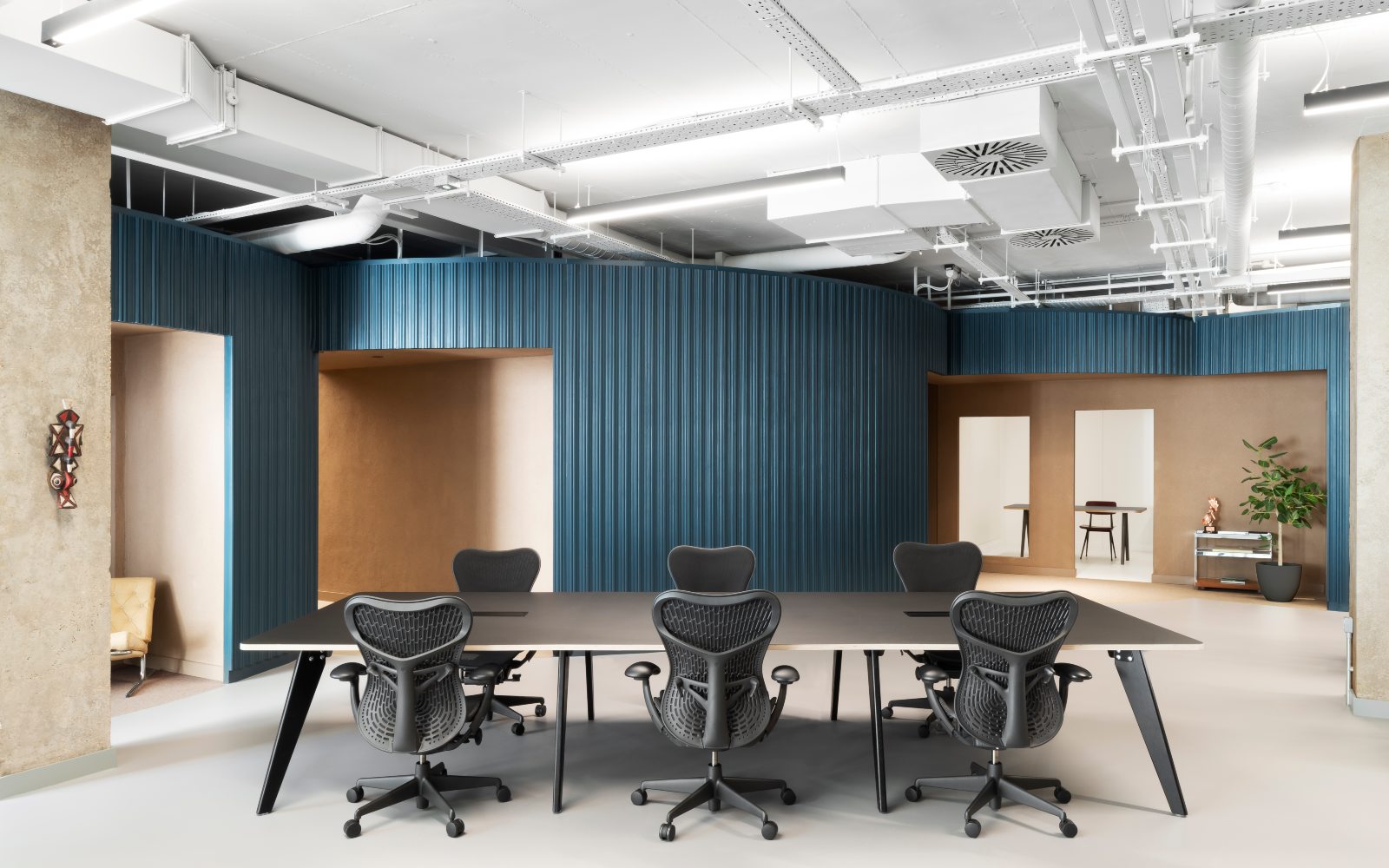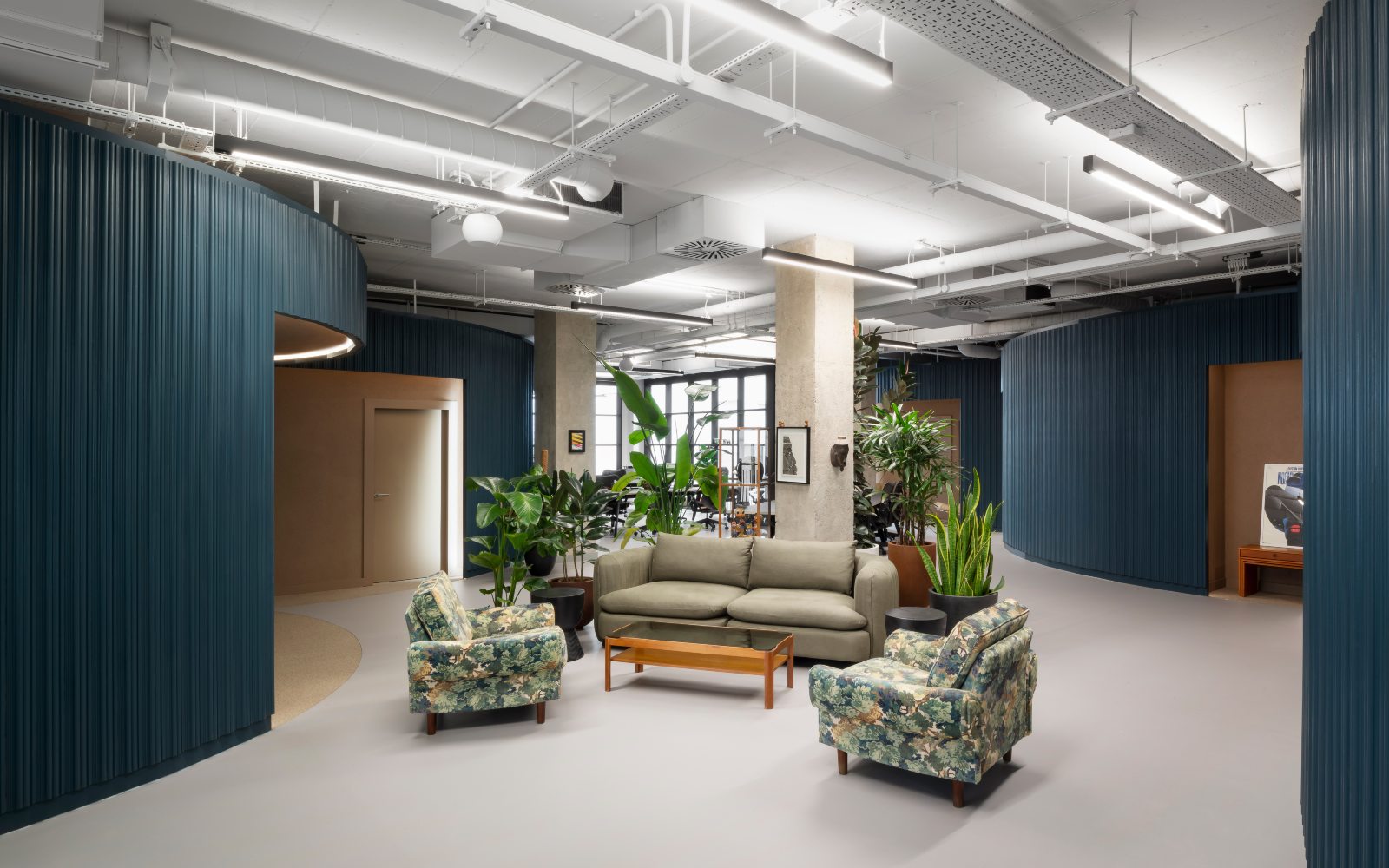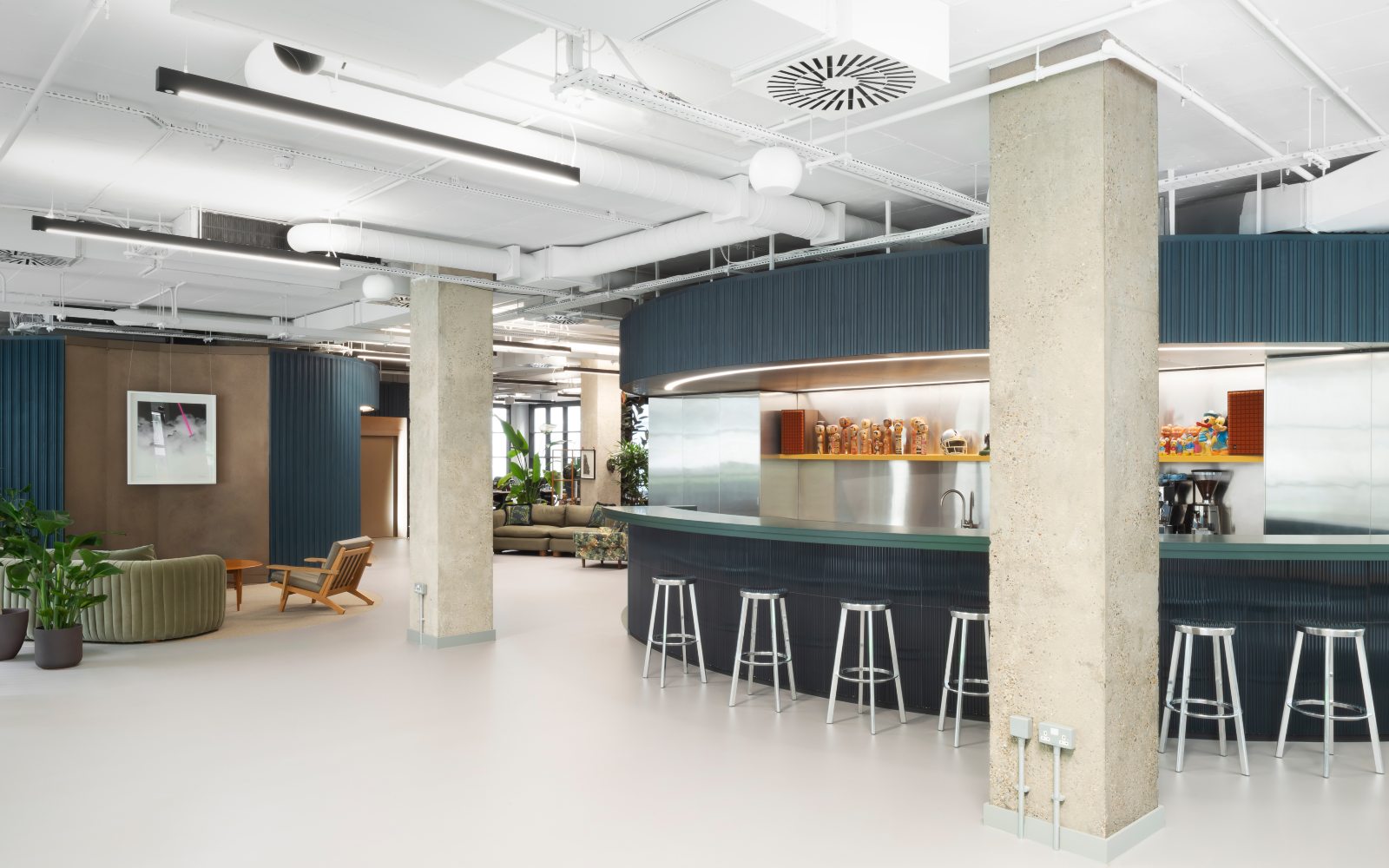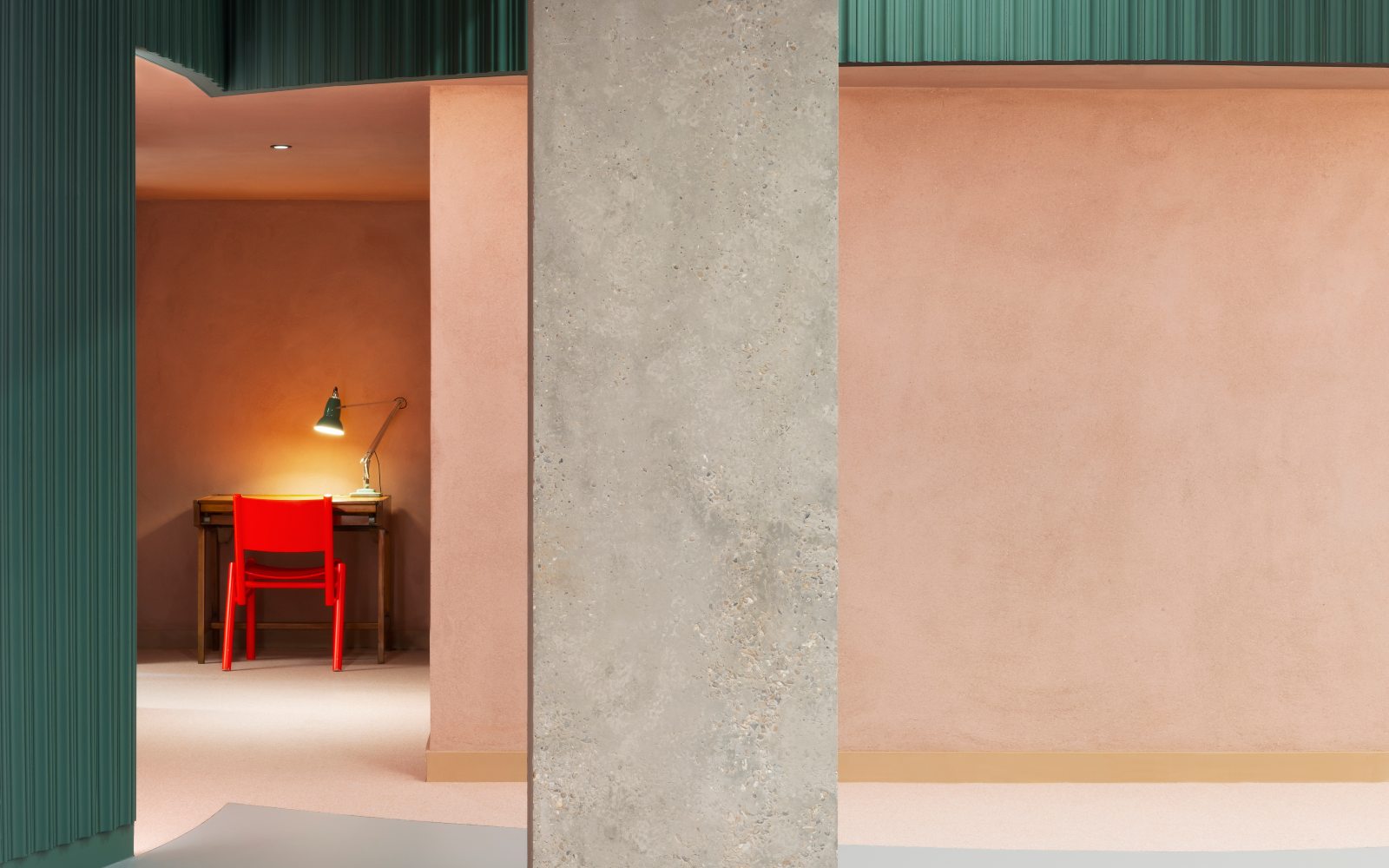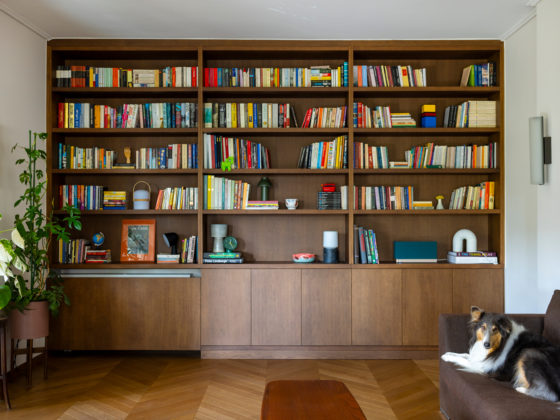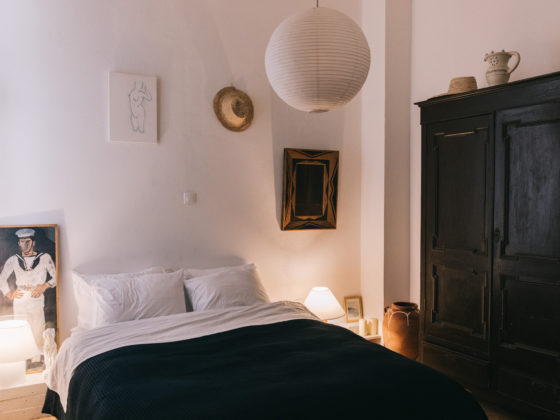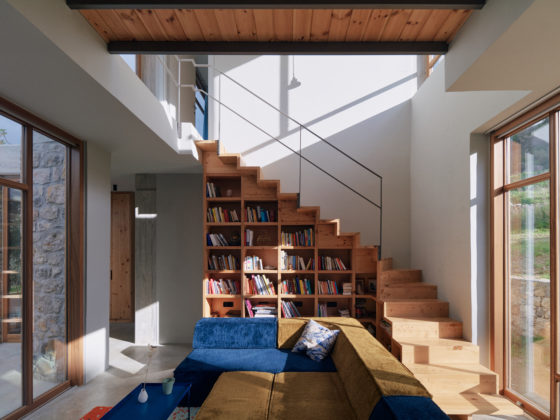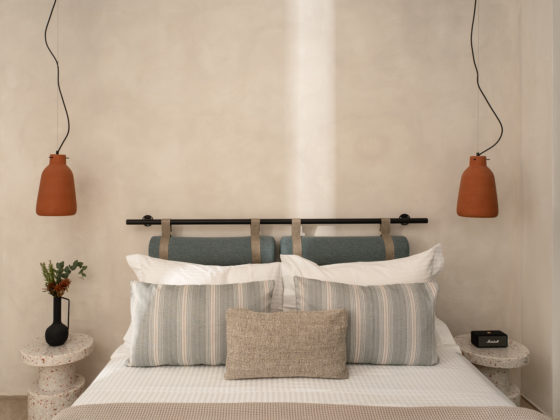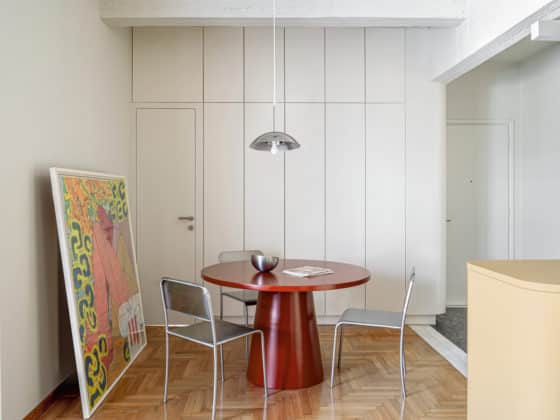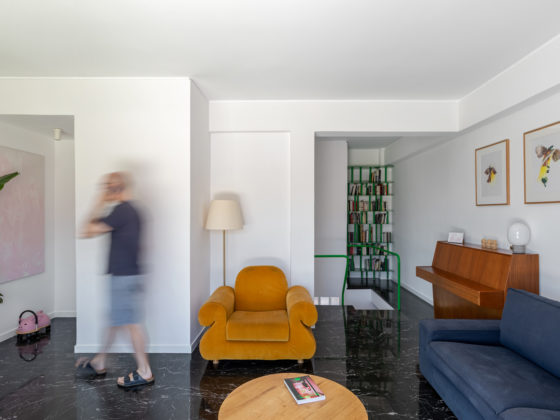An independent visual effects and design studio in East London gets transformed by Bureau de Change architects, a part of a sequence of spaces with varying degrees of privacy, informed by the heritage of the site’s industrial past.
Answering to the client’s brief for a specific working environment, production and visual effects suites that are isolated from external sources of light and sound, Bureau de Change created a space drawing inspiration from the site’s industrial past as an Engineers and Iron Foundry. Geometrical forms of traditional iron kilns reprise themselves in the proposal as a composition of dispersed intersecting circles, mapped across the grid system established by the existing columns. Each volume contains a rectangular void, accommodating and enclosing the production, editing, and colour suites in a controlled private environment. Smaller cylinders intersect the private working space to create transitioning thresholds.
The undulating external surface forged from the intersections was excavated at intervals, creating carved-out spaces within the volumes. These cavities function as semi-private break out spaces, each correlating to their respective enclosed working suite; creating duality of space within a singular volume, separated by a lone wall. The interior of the cut-outs is finished with natural clay plaster, juxtaposing the sharper textures of cylinders with warm and rough surfaces. The placement of each excavation allows for a natural transition between the enclosed working areas, semi-private breakout cavities, and the central open plan working space.
Carefully curated furniture was selected to activate the space and create a homely and comfortable atmosphere, placed among the cavities and the negative spaces formed between the volumes.
The layout of the new studio offers access to a gradating degree of porosity and permeability work-space environments, incorporating and catering to preferential cultures, values, and behaviours of people. The spaces are not separated into different sectors but are connected seamlessly into one plan, offering a sense of discovery through the layers of spaces.
